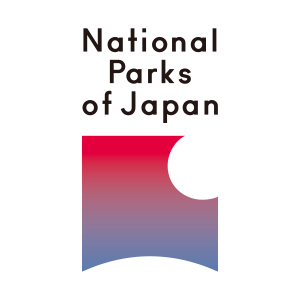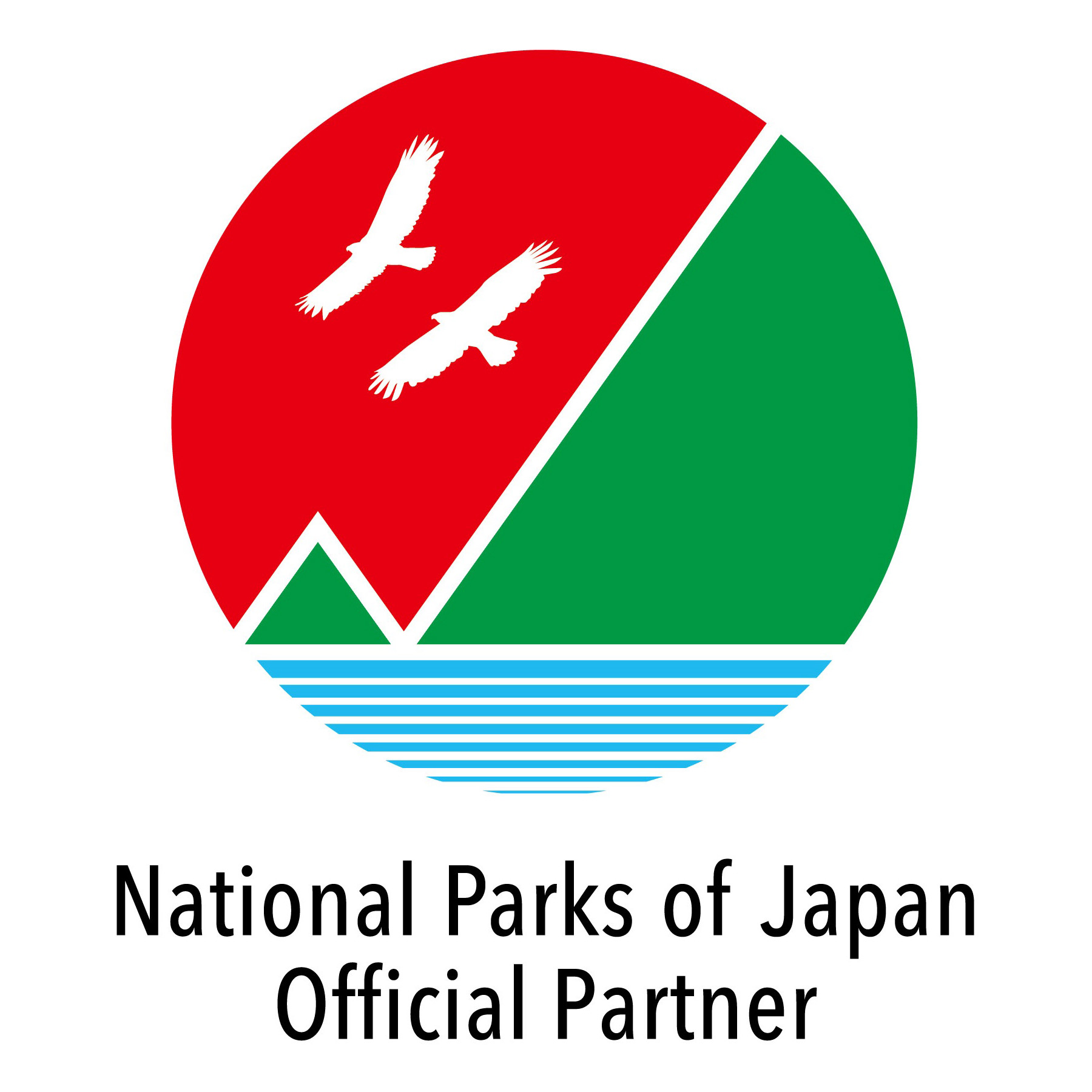

Our Vision to Support the Future of
Japan Through Tourism

Through a virtuous cycle of protection and use of the national park, we will protect the excellent nature and revitalize the region.

Rishiri-Rebun-Sarobetsu National Park

Shiretoko National Park

Akan-Mashu National Park

Kushiroshitsugen National Park

Daisetsuzan National Park

Hidakasanmyaku-Erimo-Tokachi National Park

Shikotsu-Toya National Park

Towada-Hachimantai National Park

Sanriku Fukko (reconstruction) National Park

Bandai-Asahi National Park

Nikko National Park

Oze National Park

Chichibu-Tama-Kai National Park

Ogasawara National Park

Fuji-Hakone-Izu National Park

Minami Alps National Park

Joshin’etsukogen National Park

Myoko-Togakushi renzan National Park

Chubusangaku National Park

Hakusan National Park

Ise-Shima National Park

Yoshino-Kumano National Park

San'inkaigan National Park

Setonaikai National Park

Setonaikai National Park

Setonaikai National Park

Daisen-Oki National Park

Ashizuri-Uwakai National Park

Saikai National Park

Unzen-Amakusa National Park

Aso-Kuju National Park

Kirishima-Kinkowan National Park

Yakushima (Island) National Park

Amamigunto National Park

Yambaru National Park

Keramashoto National Park

Iriomote-Ishigaki National Park

The entire government is working on the policies of the "Our Vision to Support the Future of Japan Through Tourism" which aims to increase the number of foreign visitors to Japan up to 60 million by 2030.
National parks were positioned as one of the pillars of the "Tourism
Vision to Support Tomorrow's Japan" compiled by the government in
March 2008, and the "National Park Enjoyment Project" has been
promoted.
The "Step Up Program 2020" has been formulated for eight national
parks (the eight leading parks) where proactive and intensive efforts
are being made. Based on this program, necessary measures and
initiatives have been taken in terms of both hardware and software to
make the national parks more attractive to foreign visitors to
Japan.
In addition, the results of the first eight parks have been shared
with other parks.
The number of foreign visitors to national parks increased from about 4.9 million in 2015 to about 6.67 million in 2019.
However, due to the impact of the 2020 outbreak of COVID-19, the number of foreign visitors to Japan as a whole decreased by approximately 87% compared to the previous year, and in addition, the number of domestic overnight visitors in national parks decreased by approximately 44% compared to the previous year, causing a major damage to tourist attractions in national parks. In order to recover from the current situation, it is necessary to adapt to changes in lifestyles and work styles, and to promote visits by a wide range of domestic users by offering new values of use, such as playing and working in national parks, as well as to increase the number of foreign visitors to Japan, which has declined significantly, and to contribute to achieving the government's overall 2030 target.

Stories to experience -National Park of Japan-
National parks in Japan are characterized not only by their outstanding nature, but also by the unique local lifestyles of the people, including the traditional culture and food nurtured by that nature. The diverse natural scenery and the condensed stories of life, culture, and history will give you a one-of-a-kind experience that you will never forget.
![[Photo] The Onda Festival is held at Aso Shrine to pray for a good harvest. The sight of women dressed all in white and parading through the green fields is mysterious and solemn.](img/features01.jpg)
![[Photo] A Japanese satoyama landscape. There are majestic mountain and the blue rice paddies in the foreground.](img/features02.jpg)
![[Photo] A scene from rice harvesting. A woman bends down to harvest the golden rice.](img/features03.jpg)
![[Photo] Soba is a representative of Japanese food culture. Soba is related to each land and lifestyle, and the way of eating it varies from region to region.](img/features04.jpg)

In August 2020, we compiled the "Policy for the National Parks Project in 2021 and Beyond" and formulated the Step Up Program 2025 for each park.
Based on this policy, we will strengthen our efforts to attract domestic visitors, promote the acceptance of foreign visitors by making use of the environment and infrastructure we have established, create world-class national parks, and expand initiatives that have been successful in the preceding eight parks. Furthermore, we will promote zero-carbon parks and the creation of parks for decarbonation and sustainability in national park tourism in order to achieve carbon neutrality in 2050.
A press kit summarizing the characteristics of national parks in Japan as a whole, in addition to an outline, model course information, and seasonal highlights of each respective national park is available for download to various media outlets and National Park Official Partners for the promotion of national parks in Japan.
Japanese▲
English▲
Korean▲
Chinese (Traditional)▲
Chinese (Simplified)▲
The Ministry of the Environment provides images and videos for use in promoting national parks. To use the images and videos, please contact the National Park Visitor Use Promotion Office of the Ministry of the Environment after reading the
View all▲



We have created a standardized national parks insignia.

This is an insignia which expresses the sun climbing above the
horizon.
We have expressed a landscape enshrouded in a typically Japanese
mist using gradation in vivid colors.
By symbolizing the sunrise in a geometric figure, we economically
evoke national parks as “spaces” containing rich
diversity.

On July 6 th 2018, in the presence of Hiroyoshi Sasagawa,
Parliamentary Vice-Minister of the Environment, we have appointed Ms.
Ko Shibasaki, Japanese actress and singer, as our "Environmental
Special Publicity Ambassador" to spread information about sustainable
lifestyles and the connection between people, forests, villages,
rivers, and the ocean.
Ms. Ko Shibasaki practices a sustainable
lifestyle under the concept of "being yourself for a sustainable daily
life". Also, aiming to globally promote the good points of Japan, Ms.
Ko Shibasaki has started activities under her global artist name,
MuseK, from May 30th 2018. She will be sharing a variety of
information about the environment, including the charms of the
National Parks of Japan, both domestically and internationally.
![[Photo] Hiroyoshi Sasagawa, Parliamentary Vice-Minister of the Environment, and Ms. Ko Shibasaki pose for a photo with the power of attorney in their hands.](img/ambassador_01.jpg)
![[Photo] Hiroyoshi Sasagawa, Parliamentary Vice-Minister of the Environment, and Ms. Ko Shibasaki chatting in the reception room.](img/ambassador_02.jpg)
MuseK : https://koshibasaki.com/news/
Out of Japan's 35 national parks, 12 will celebrate their 90th anniversary from March 2024 to February 2026. In a special video featuring this event, actress Ms. Ko Shibasaki will provide narration and deliver a congratulatory message from Aso-Kuju National Park, which is one of the 12 parks. The video highlights the stunning natural landscapes preserved within these national parks, as well as the vibrant lives, traditions, and cultures of the local communities. It also features interviews with its local residents, offering insights into the benefits of the national parks and the significance of their conservation.

The Program is aimed at helping persons in and outside Japan better understand natural environment preservation efforts and to vitalize areas home to the country’s national parks. This is through a process in which the Ministry of the Environment and companies and organizations (collectively “Companies”) cooperate with each other to publicize to the world the scenic beauty of Japanese national parks, which the Japanese feel proud in front of the world, as well as the attractiveness of staying within a local national park, thereby raising the number of national park users/visitors from within the country and from abroad.
Companies, etc. seeking to conclude a partnership with the Ministry of the Environment could prepare and propose to the Minister of the Environment a proposal on initiatives to promote the attractiveness of national parks in accordance with the Terms of Reference for the Official Partnership Program for National Parks. The partnership can be concluded when the proposed initiative is deemed to meet the requirements listed in the Terms of Reference.

The logo represents Japan's national parks as a whole, with green
representing mountains and forests, and blue representing oceans and
lakes within the Hinomaru circle.
The white mountain ridge represents the image of the future growth.
Also, it means “Nature”, “National Park”,
and “Nippon”, as the ridge looks like the letter N.
The two birds are images of golden eagles. Golden eagles represent a
partnership because they are said to maintain the same pair
relationship.
This policy stipulates the matters pertaining to the operation of
the National Parks Official Instagram
(https://www.instagram.com/nationalpark_japan) account and the
National Parks official Facebook
(https://www.facebook.com/NationalParksOfJapan/)account.
(hereinafter
referred to as “The National Parks of Japan’s official
SNS”.)
The National Parks of Japan’s official SNS aims to convey
the attractions of National Parks to the entire world by
disseminating among others, images and perspectives on the
magnificent natural environments of National Parks, flora and
fauna, culture, people’s lifestyles, cuisine and events.
The
National Park’s official SNS will be used exclusively for
information dissemination and in principle responses, etc. will
not be forthcoming.
Any comments or queries will be accepted
at the MOE Japan mail address (https://www.env.go.jp/moemail/) or
at koen_prize@env.go.jp
The National Parks Official SNS shall be operated by the Visitor Use Promotion Office, National Park Division, Nature Conservation Bureau, Ministry of the Environment (hereafter referred to as “this Office”).
The National Parks Official Instagram shall provide the following information.
Please be reminded that if content falls under any of the following items, we may delete it or block the account without notice:
Ensure to indicate a credit for its source using the method stipulated separately when reproducing of content of the National Park of Japan’s official SNS. However, this provision excludes uses for private purposes, quotations and other acceptable uses as stipulated under the Copyright Law.
The content of this policy shall be posted on the website of the Ministry of the Environment. The policy shall be changed as necessary without prior notice.
Information disseminated on the National Parks of Japan’s official SNS (hereinafter referred to as “Content”) can be used freely for purposes including reproduction, duplications, public transmission, translation and modification in accordance with (1) and (2). Commercial uses are also acceptable. Use of Content is presumed on agreement to the rules contained in this document.
(i) Ensure to include a credit when using content. The method for
indicating a source should be in the manner given below.
(Example of source credit)
Source: Official Instagram page, National Parks of Japan, Ministry
of the Environment
(https://www.instagram.com/nationalpark_japan)
Source: Official Facebook page, National Parks of Japan, Ministry
of the Environment (https:/
/www.facebook.com/NationalParksOfJapan/)
(ii) When editing or modifying content, ensure to separately
indicate that the content has been edited or modified, etc. in
addition to the above source credit.
It is also not permitted to disseminate or use the edited or
modified information in a manner which suggests that it was
created by the Ministry of the Environment, Japan.
(Example of source credit in case of edited or modified use)
Source: Created using modified content from the Official Instagram
page, National Parks of Japan, Ministry of the Environment
(https:/ /www.instagram.com/nationalpark_japan)
Source: Created by (XX) Co. Ltd., based on the Official Facebook
page, National Parks of Japan, Ministry of the Environment
(https: / /www.facebook.com/NationalParksOfJapan/)
(i) The copyright and other rights (example: picture image rights,
publicity rights, etc.) of certain Content included on the
National Parks SNS may in certain instances be held by a Third
Party (refers to copyright held by parties other than the
Government of Japan. Same hereafter.)
Content for which the copyright or other rights is held by a Third
Party, must only be used after the permission of the Third Party
copyright holder has been granted under the users own initiative
to obtain such content, excluding instances where it is already
indicated that the rights are dealt with.
(ii) Certain Content for which the copyright is held by a Third
Party may already directly or indirectly indicate or show that the
copyright is held by a Third Party by means including indication
of source credit. However, other Content for which the portion
rights are held by a Third Party is not clearly specified or
elucidated also exists. When using such Content the user should
confirm the issue of copyright under their own initiative.
(iii) It may be possible to use certain Content for which the
copyright is held by a Third Party for quotations, etc., without
the express permission of the copyright holder or other party,
where such uses are permitted in the Copyright Law.